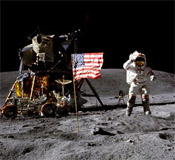National Aeronautics and Space Administration
Date of this Version
2014
Citation
Meteoritics & Planetary Science 49, Nr 5, 732–739 (2014) doi: 10.1111/maps.12286
Abstract
We conducted experiments in space to investigate the aggregation of millimeterand submillimeter-sized particles in microgravity, an important early step in planet formation. Particulate materials included salt (NaCl), sugar (sucrose), coffee, mica, ice, Bjurb€ole chondrules, ordinary and carbonaceous chondrite meteorite fragments, and acrylic and glass beads, all triply confined in clear plastic containers. Angular submillimeter particles rapidly and spontaneously formed clusters strong enough to survive turbulence in a protoplanetary nebula. Smaller particles generally aggregated more strongly and quickly than larger ones. We observed only a weak dependence of aggregation time on particle number density. We observed no strong dependence on composition. Round, smooth particles aggregated weakly or not at all. In a mixture of particle types, some phases aggregated more readily than others, creating selection effects that controlled the composition of the growing clumps. The physical process of aggregation appears to be electrostatic in nature.


Comments
This article is a U.S. government work, and is not subject to copyright in the United States.